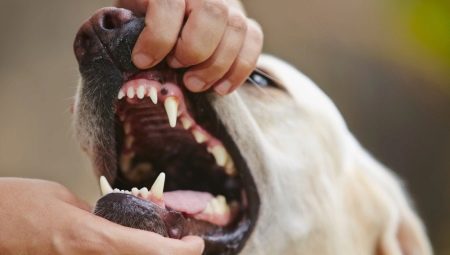When deciding to get a dog in the house as a pet, you need to weigh the pros and cons very well, familiarize yourself with the history of the dog breed and be sure that the pet will be surrounded by the necessary care and attention from the owner.
It is very important to learn as much as possible about the animal: about how to properly feed, care, and how a pet should develop with age. One of the stages of caring for a dog is caring for the oral cavity and teeth as well. In our article, all the information will be devoted specifically to the dog’s teeth: we will talk about how the dog’s jaw is built, at what age and what teeth appear, and most importantly, we will find out how to properly care for the oral cavity.
The structure of the dog jaw
Each breed is individual in its appearance and structure. This also applies to the jaws. Dog handlers and experts say that on average, all dogs should have 42 teeth: 22 are located in the upper jaw, 20 - in the lower.
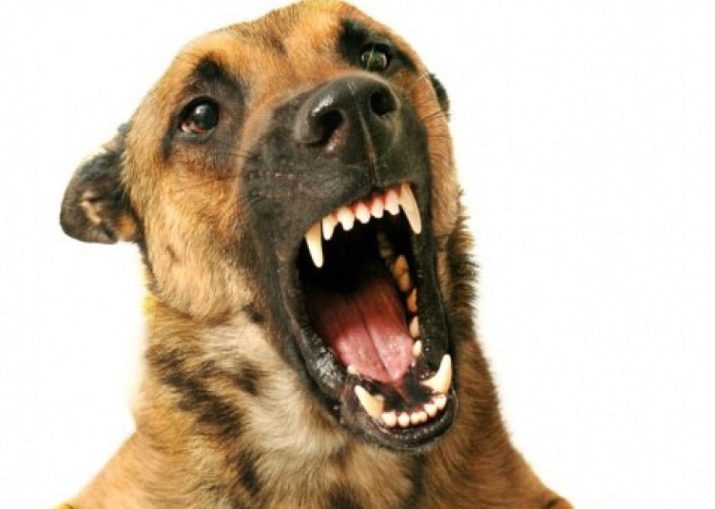
More detailed information can be found by looking at the table:
Jaw | Incisors | Fangs | False-rooted (premolars) | Indigenous (molars) |
Top | 6 | 2 | 8 | 4 |
Lower | 6 | 2 | 8 | 6 |
The number of incisors, of course, may vary, but the structure of the dog’s jaw is exactly the same for all dog breeds. It consists of:
- from a root located inside the bone tissue;
- a neck located on top of soft tissue;
- crowns are a continuation of the tooth neck, a component and the main element of which is hard enamel, which is responsible for the strength of the teeth and allows the dog to easily bite bones and bite off meat.
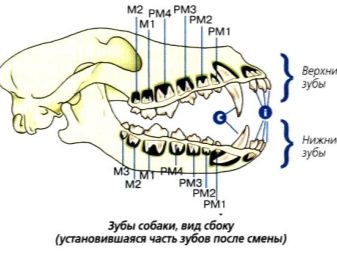
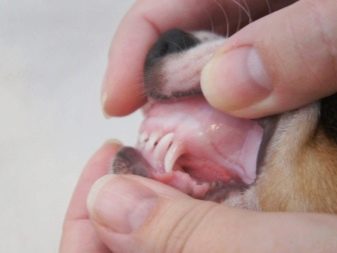
The number of teeth and their development should be monitored, because they are the main weapon of each dog and a tool for absorbing food in any form.
When do they grow up?
Like any other living thing, babies are the first to have baby teeth. Their total number at the age of 2 months should be 28 pieces: 14 on the lower jaw and 14 on the upper. The first should appear at the age of 2-3 weeks of age. Milk incisors appear in the following sequence:
- first fangs - 4 pieces;
- further, after the fangs follow the incisors - 6;
- after premolars (pseudo-rooted) erupt, they should erupt almost everything.
Particular attention should be paid to premolars that grow behind fangs. If these teeth appeared along with milk teeth, most likely they will not fall out and strong molars will not appear in their place. The premature appearance of a premolar behind a canine may result in an edentulous position.
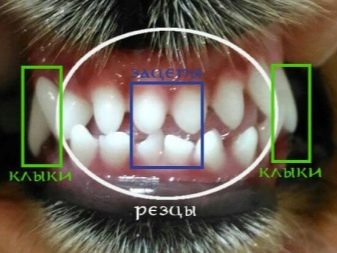

Repeated cases where a puppy may have problems with the appearance of milk incisors. This happens in connection with the following:
- improper jaw structure - there can be a lot of space for tooth growth or, conversely, a little;
- unbalanced nutrition, this also applies to the time that the puppy spends in the womb - a large amount of calcium and vitamins of group D or their lack;
- heredity.
All the reasons that were listed above can lead to the appearance of:
- "Double teeth";
- bad enamel;
- malocclusion;
- death of the rudiments of the root system.


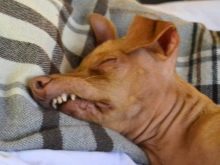
For inexperienced owners, the question may arise about how to distinguish a milk tooth from a molar tooth. To do this is not at all difficult:
- dairy may appear transparent;
- It has a cold tint;
- has a bizarre shape.
If the dog belongs to a large breed, then the difference is very noticeable - milk teeth are much smaller in size than molars.
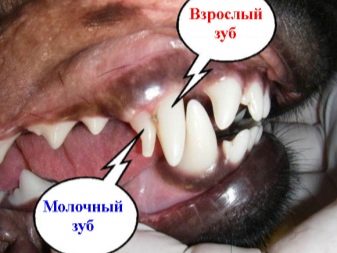
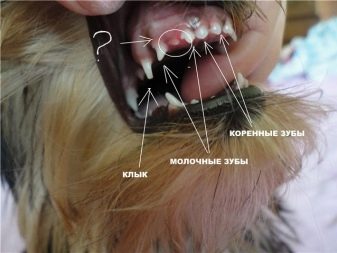
How are they changing?
At the age of 4 months, the dog begins to have milk teeth and so-called molars appear - molars. Most often, the following happens - the milk does not fall out, but is replaced by the root, which means that a molar immediately appears in its place. It is strongly not recommended to pull out a milk tooth that staggers independently - you can damage the jaw.
An ideal option to help the dog in some way would be to let it nibble on something solid. So the tooth can fall out by itself.
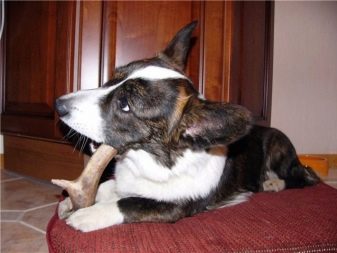
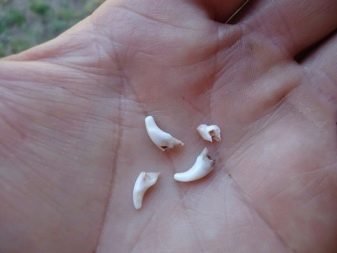
In most cases, the owner may not notice that the pet is changing incisors. But it is advisable, of course, to follow this process to make sure that it is happening correctly. After 4 months, you need to visually inspect the dog's oral cavity to make sure that the teeth fall out and new ones appear in their place. It is also necessary to ensure that the number of molars corresponds to the age of the animal.
As early as 7 months, most dog breeds should have a complete set of root incisors:
- in 5 months there should be 12 incisors;
- at 6 months - 16 premolar teeth;
- at 7 months - 4 fangs, 10 molar teeth.

To verify the correct number of teeth in a dog, it is advisable to familiarize yourself with the features of the breed.
The owner of the animal must monitor the correct sequence of appearance of molars. If growth disorders are noticed, you should definitely contact your veterinarian, because this can be a clear sign of a disease such as rickets. If you do not understand the situation in time, and the diagnosis is confirmed, it is likely that the dog may become disabled.
Each dog owner should know important information: when there is a change of primary teeth to molars, the immunity becomes weakened. During this period, you need to monitor the diet, adhere to a proper and balanced diet, organize a comfortable living environment for the animal. Be sure to visit a veterinary clinic and clarify information on vaccinations.There are cases that those that were made to the pet before the period of the change of teeth need to be repeated.
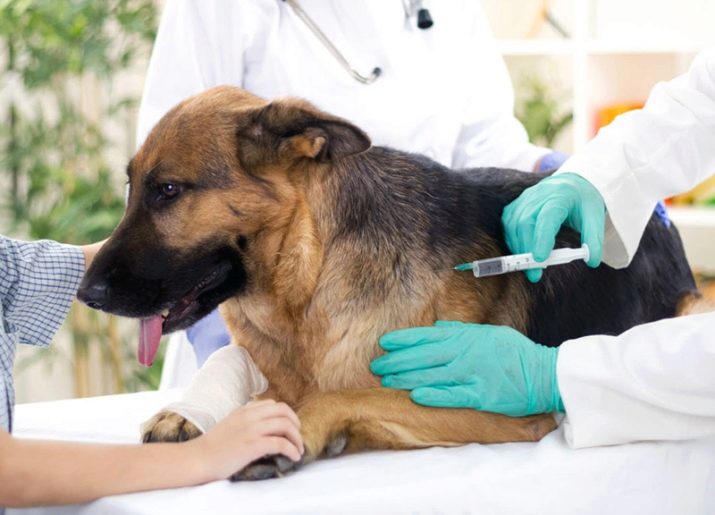
Oral care
Strong and healthy teeth are the key to good health and well-being. If the animal’s teeth are bad, it does not have the ability to eat normally, to defend itself. Also, the animal becomes susceptible to various infectious diseases.
You need to teach your puppy to oral hygiene from a very young age. The pet will get used to certain procedures that should be regular, and will no longer resist them at a more mature age.
As soon as the dog has milk incisors, they need to be looked after. To do this, purchase the following.
- Toothpaste. The usual, which people use, is prohibited, since it contains fluorine, which is contraindicated in animals. You need to buy a special toothpaste for dogs, it can even be with a meat aroma and the animal will like it.
- A toothbrush. Teeth can be brushed with a special brush for dog teeth or children’s. It should be equipped with soft bristles so as not to scratch the gums.
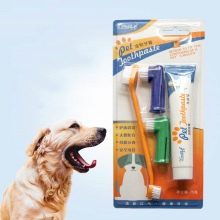
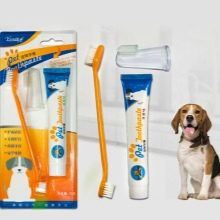
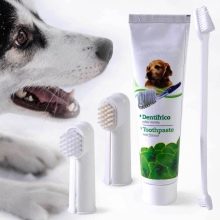
Clean correctly:
- the brush needs to be moved parallel to the gums, vertical movements are unacceptable - they can damage soft tissues;
- First of all, you need to clean the front surface, after - the inside;
- toothbrushing should be carried out 2 times a week.
If you do not adhere to these recommendations, then over time it will be possible to observe the appearance of plaque and tartar. This can cause damage to tooth enamel and the spread of bacteria, as a result of which teeth will fall out and gums will bleed heavily.
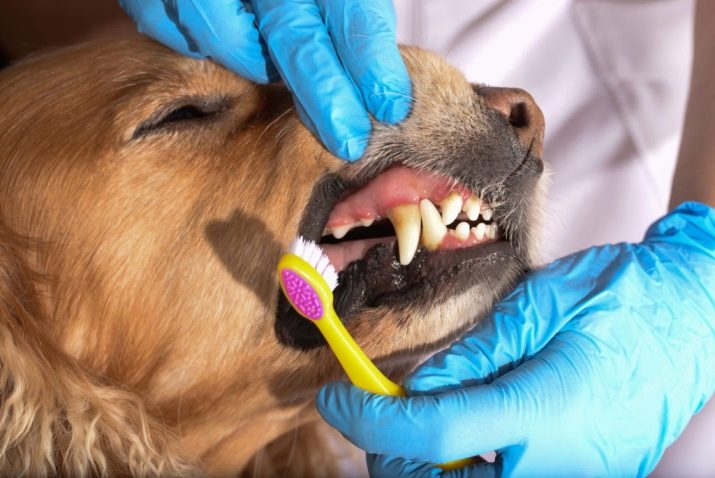
There are two ways to get rid of stone and plaque.
- Periodically carry out preventive maintenance at home: feed the dog dry food, special treats, hard varieties of apples, carrots. These products have a fairly dense texture, and chewing them can remove the stone from the teeth.
- Contact a veterinary clinic, where plaque can be removed using ultrasound, mechanical intervention or abrasive substances.
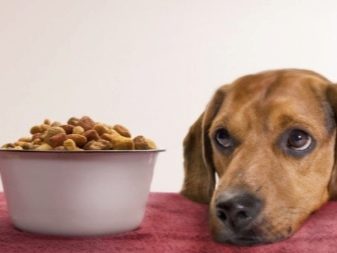
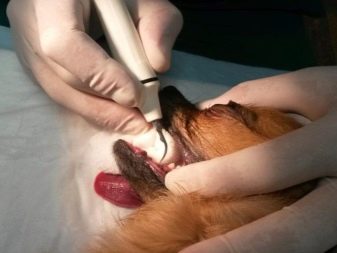
It is strongly recommended that you do not remove the stone yourself, since it can be removed together with enamel, which is fraught with consequences.
Contact your veterinarian if:
- improper growth;
- detection of plaque and stone;
- if the gums are inflamed;
- the oral mucosa was inflamed, erosion and ulcers appeared;
- gums bleed;
- the neck of the tooth is exposed;
- destruction of tooth enamel;
- teeth have changed color.
If you find any of the above problems, you need to, without wasting time, go to a specialist and take care of your pet’s health.
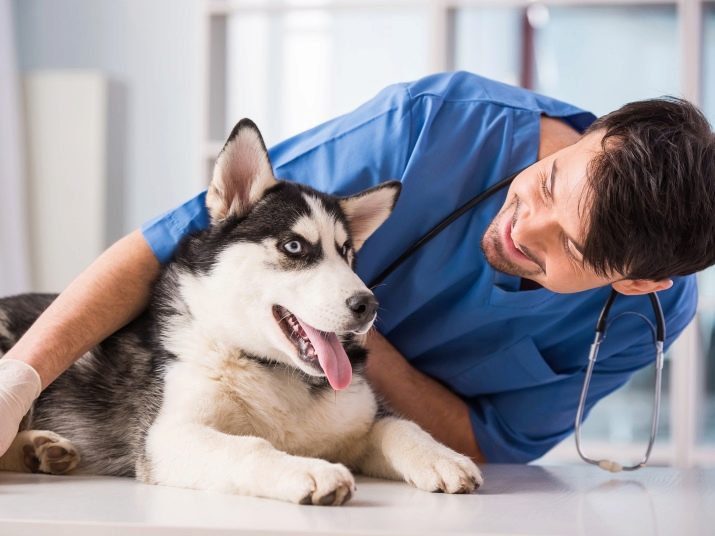
How to determine the age of the teeth?
Repeated cases where people decide to take a dog from a kennel or shelter. In this case, it is not possible to be exactly sure of the age of the animal. You can determine the age of the dog by the number of teeth. Make it easy. You need to carefully look at the incisors, and to be precise, on which of them are off.
The information is shown in the table below:
Age years | Location of incisors, shape |
1,5 | Front maxillary incisors |
2,5 | Middle jaw incisors |
3,5 | Front top |
4,5 | Medium top |
5,5 | Extreme bottom |
6 | Extreme top |
9… 10 | The front incisors are snapping off and their shape becomes oval |
10… 12 | Front incisors completely fall out |
You also need to inspect the fangs. At the age of 8 years in a dog, they can become dull and begin to hurt. From 12 to 16 years old, only fangs remain from all teeth, all the others fall out. And already in 20 years the animal becomes completely toothless.
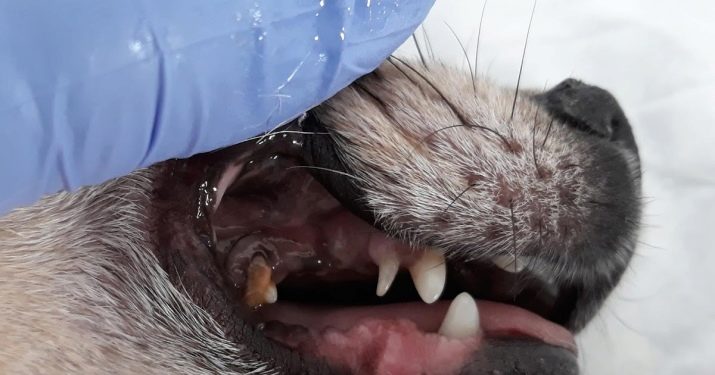
But remember: all of the above conditions for grinding of incisors and loss of fangs are relevant only if the pet was kept in good conditions that comply with the rules and standards, subject to careful care of the oral cavity.
On how to properly brush your dog’s teeth at home, see below.
